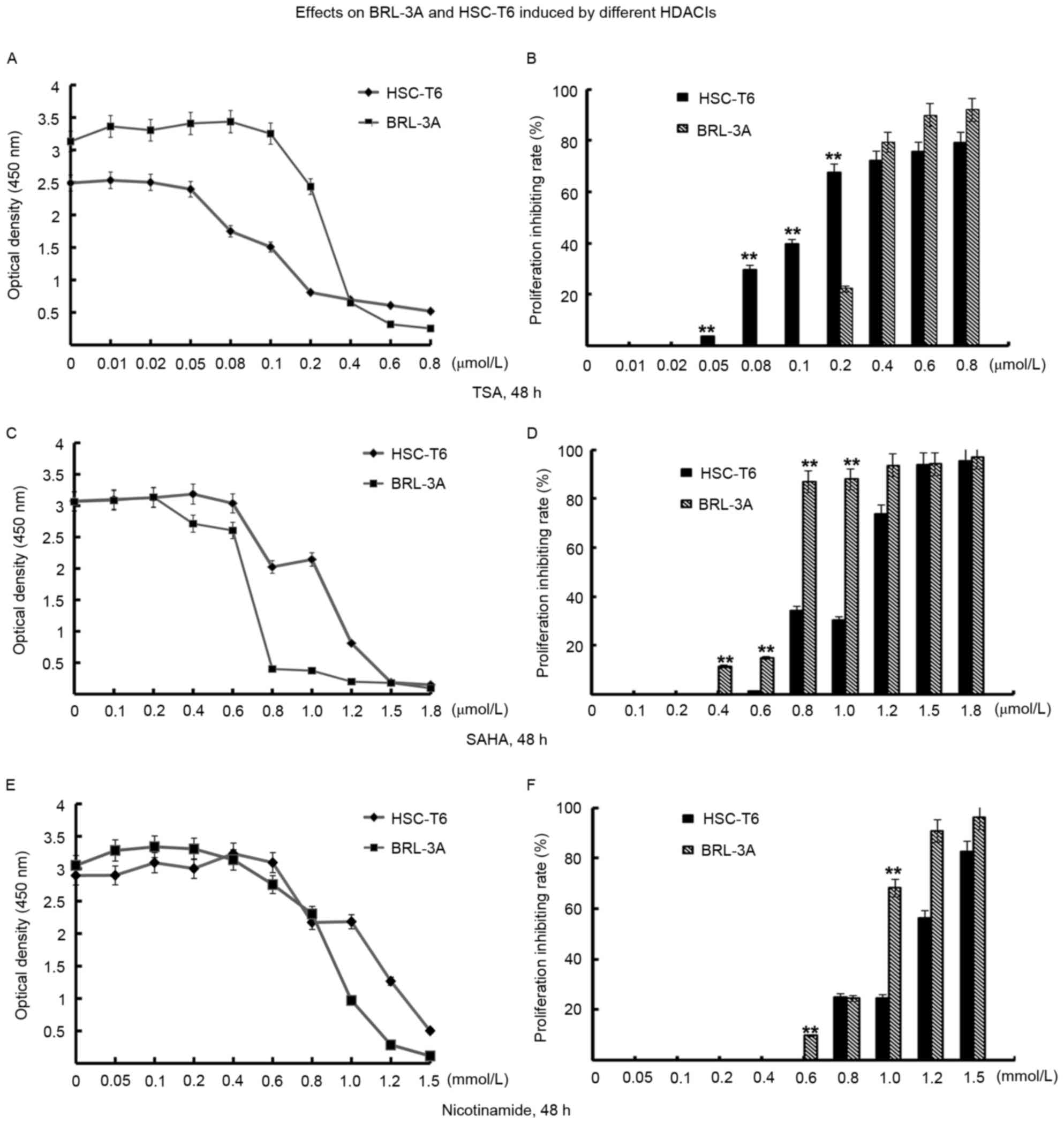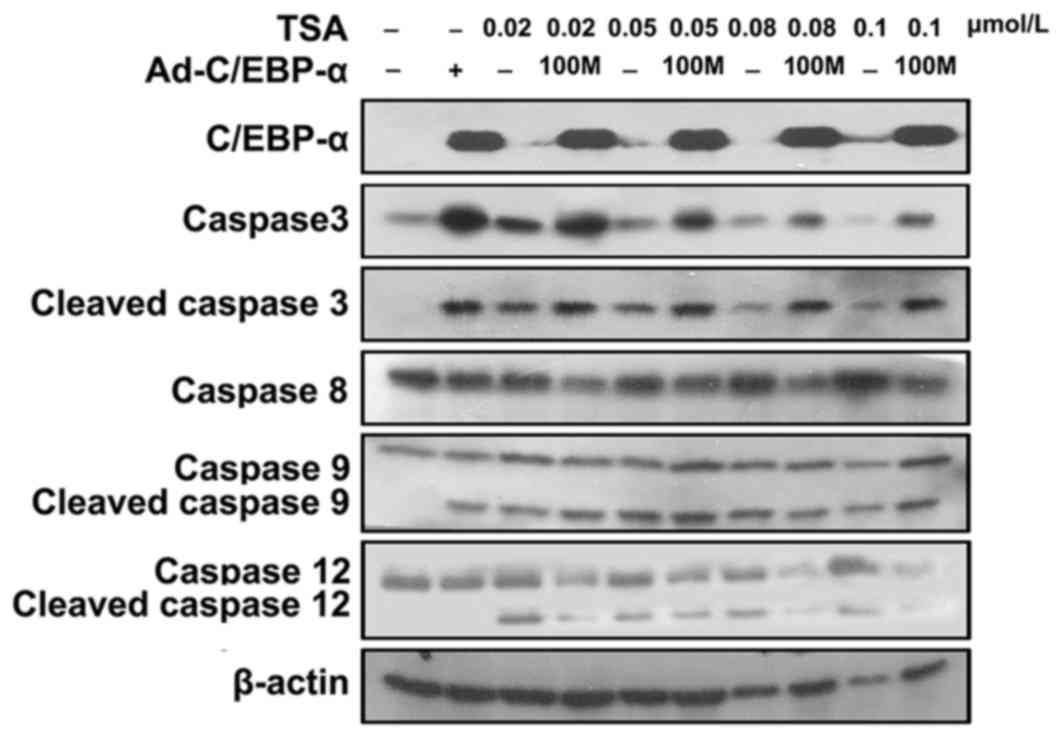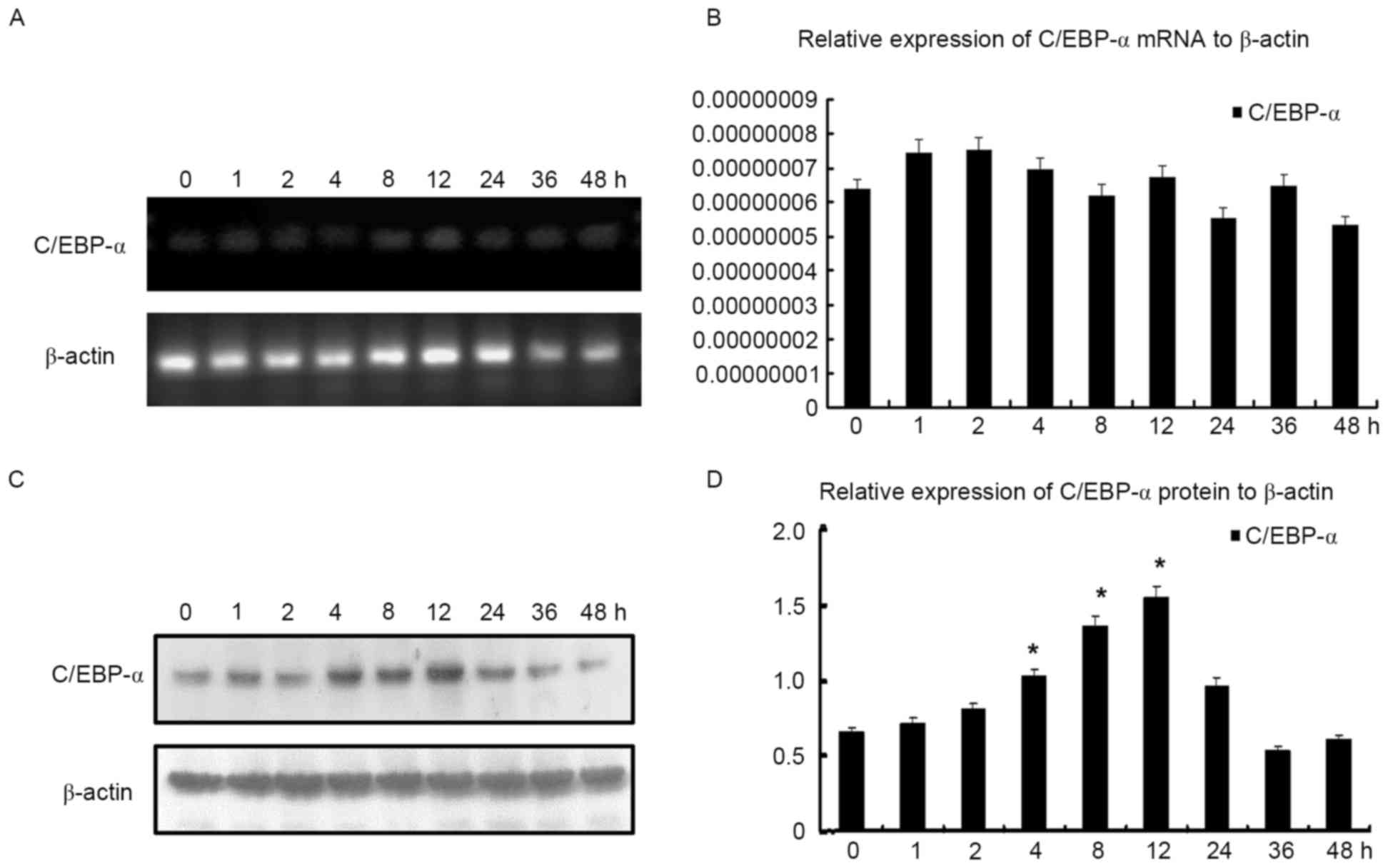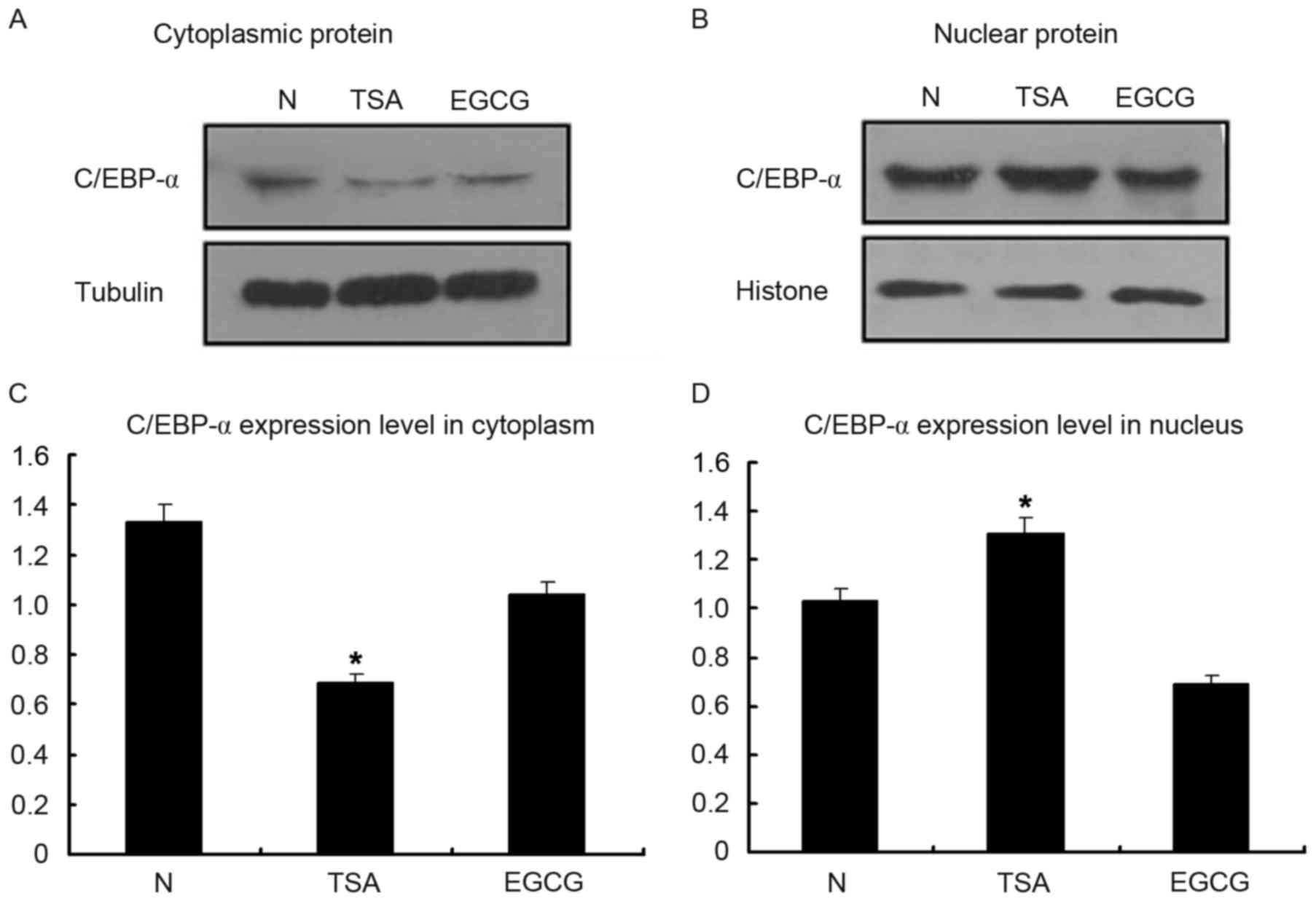TSA increases C/EBP‑α expression by increasing its lysine acetylation in hepatic stellate cells
- Authors:
- Published online on: August 24, 2017 https://doi.org/10.3892/mmr.2017.7358
- Pages: 6088-6093
Metrics: Total
Views: 0 (Spandidos Publications: | PMC Statistics: )
Total PDF Downloads: 0 (Spandidos Publications: | PMC Statistics: )
Abstract
CCAAT enhancer binding protein‑α (C/EBP‑α) is a transcription factor expressed only in certain tissues, including the liver. It has been previously demonstrated that C/EBP‑α may induce apoptosis in hepatic stellate cells (HSCs), raising the question of whether acetylation of C/EBP‑α is associated with HSCs, and the potential associated mechanism. A total of three histone deacetylase inhibitors (HDACIs), including trichostatin A (TSA), suberoylanilide hydroxamic acid and nicotinamide, were selected to determine whether acetylation affects C/EBP‑α expression. A Cell Counting Kit‑8 assay was used to determine the rate of proliferation inhibition following treatment with varying doses of the three HDACIs in HSC‑T6 and BRL‑3A cells. Western blot analysis was used to examine Caspase‑3, ‑8, ‑9, and ‑12 levels in HSC‑T6 cells treated with adenoviral‑C/EBP‑α and/or TSA. Following treatment with TSA, a combination of reverse transcription‑quantitative polymerase chain reaction and western blot analyses was used to determine the inherent C/EBP‑α mRNA and protein levels in HSC‑T6 cells at 0, 1, 2, 4, 8, 12, 24, 36 and 48 h. Nuclear and cytoplasmic proteins were extracted to examine C/EBP‑α distribution. Co‑immunoprecipitation analysis was used to examine the lysine acetylation of C/EBP‑α. It was observed that TSA inhibited the proliferation of HSC‑T6 cells to a greater extent compared with BRL‑3A cells, following treatment with the three HDACIs. TSA induced apoptosis in HSC‑T6 cells and enhanced the expression of C/EBP‑α. Following treatment of HSC‑T6 cells with TSA, inherent C/EBP‑α expression increased in a time‑dependent manner, and its lysine acetylation simultaneously increased. Therefore, the results of the present study suggested that TSA may increase C/EBP‑α expression by increasing its lysine acetylation in HSCs.














